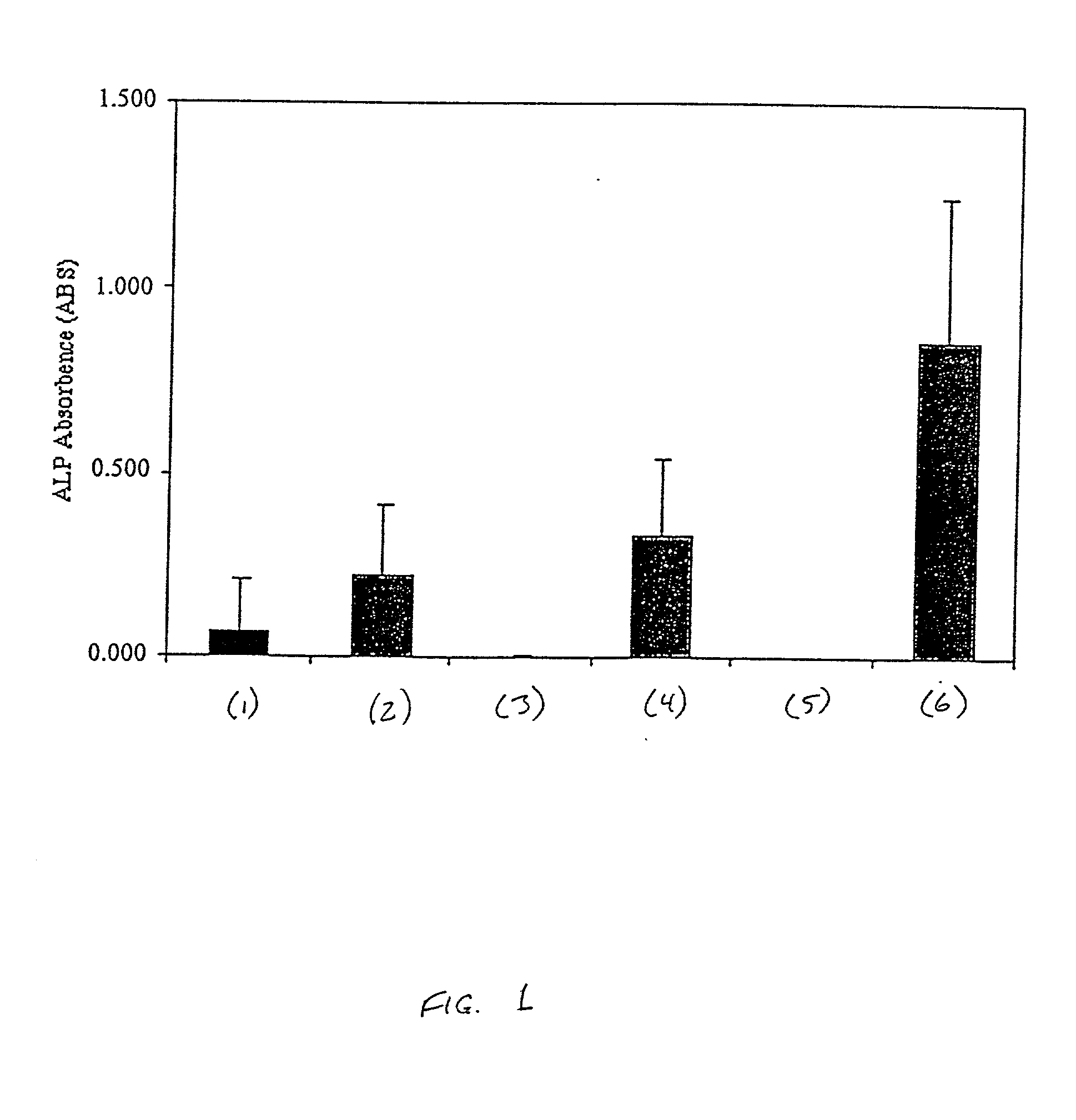Method to improve hydroxyapatite implantation and stimulate bone regeneration
a technology of hydroxyapatite and bone regeneration, applied in the field of biomedical and orthopaedic implants and prostheses and their use of hydroxyapatite, can solve the problems of loosening of implants, difficult to synthesize pure hydroxyapatite materials, and unsecure fixing of other implants such as breast implants and pacemakers, so as to reduce the affinity of the surface to adjacent tissue, lessen the affinity of the surface to the affinity of the adjacent tissue, and reduce the effect of the contacting
- Summary
- Abstract
- Description
- Claims
- Application Information
AI Technical Summary
Benefits of technology
Problems solved by technology
Method used
Image
Examples
example 1
[0025] This example demonstrates the synergistic effect of bone morphogenetic protein and nitridation on hydroxyapatite implants, using BMP-7 as the bone morphogenetic protein. The effect was detected as the rate of bone formation at the implant site, using alkaline phosphatase (ALP) activity as an indicator of bone formation.
[0026] Pure hydroxyapatite powder was obtained from Johnson Matthey Catalog Co. (Ward Hill, Mass., USA) and nitrided by exposure to flowing dry ammonia gas at 800.degree. C. for three hours. The nitrided powder was pressed into pellets measuring 6 mm in diameter and 2-3 mm in thickness, using an hydraulic press and a pressure of 1000 psi. The pellets were then sintered at 800.degree. C. in flowing dry ammonia gas for ten hours, resulting in a nitrogen content of 0.88% by weight, as determined by Galbraith Laboratories (Knoxville, Tenn., USA), using the Leco method. In the Leco method, the sample is placed in a tin capsule and combusted in an oxygen atmosphere a...
example 2
[0041] This example also demonstrates the synergistic effect of bone morphogenetic protein and nitridation on hydroxyapatite implants, this time using BMP-4 as the bone morphogenetic protein. The BMP-4 protein was obtained from R & D Systems of Minneapolis, Minn., USA, and the test protocols were the same as those described above for use with BMP-7. Likewise, the same results were obtained.
PUM
| Property | Measurement | Unit |
|---|---|---|
| temperatures | aaaaa | aaaaa |
| temperatures | aaaaa | aaaaa |
| thickness | aaaaa | aaaaa |
Abstract
Description
Claims
Application Information
 Login to View More
Login to View More - R&D
- Intellectual Property
- Life Sciences
- Materials
- Tech Scout
- Unparalleled Data Quality
- Higher Quality Content
- 60% Fewer Hallucinations
Browse by: Latest US Patents, China's latest patents, Technical Efficacy Thesaurus, Application Domain, Technology Topic, Popular Technical Reports.
© 2025 PatSnap. All rights reserved.Legal|Privacy policy|Modern Slavery Act Transparency Statement|Sitemap|About US| Contact US: help@patsnap.com

